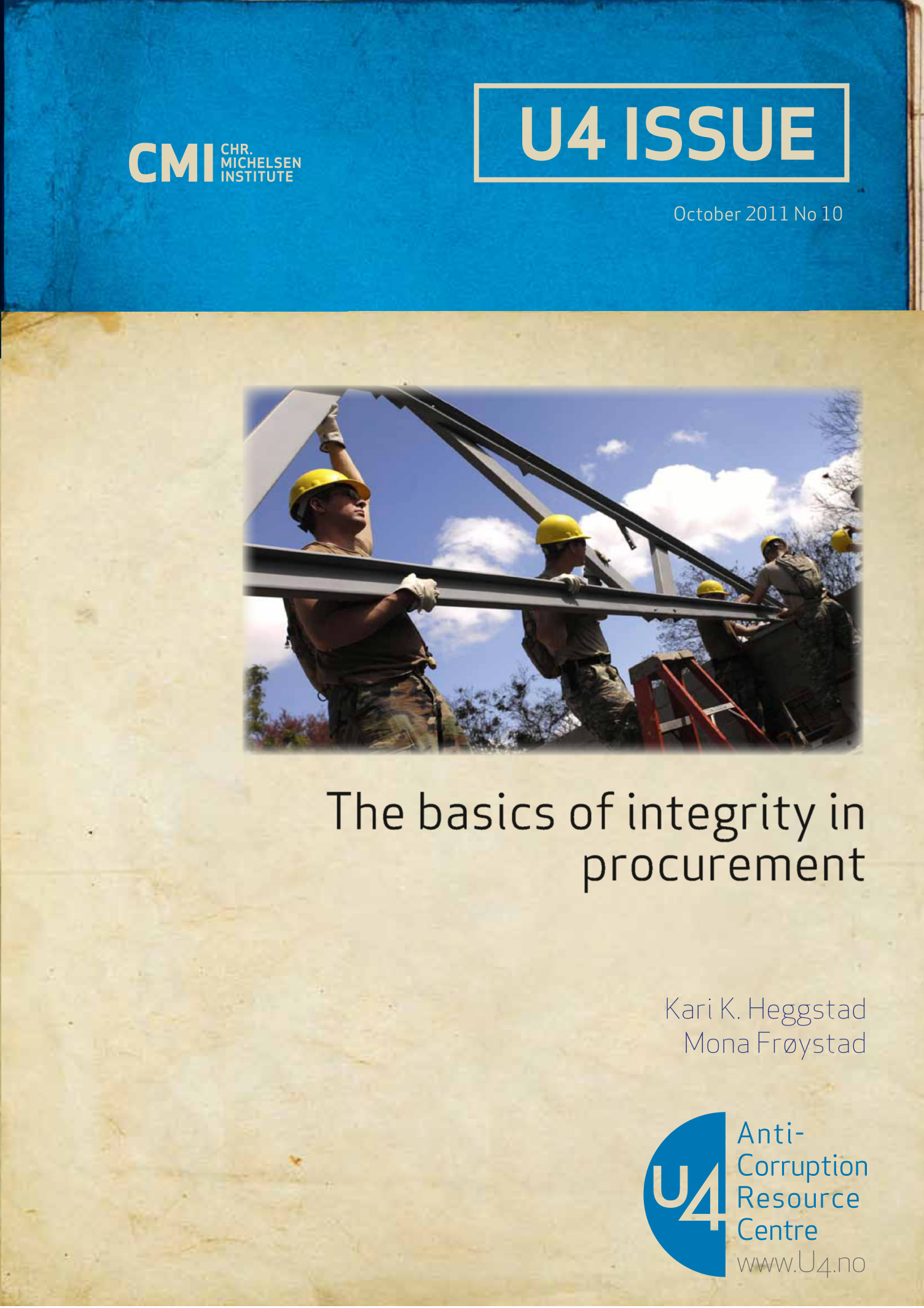U4 Issue
The basics of integrity in procurement
Why and how does corruption occur in procurement? Why is it important to prevent corruption in procurement? What are the main risks at various stages of the procurement process, and what can be done to mitigate them? Commitments under the aid effectiveness agenda to use country procurement systems, mounting pressure on aid budgets, and increasing demands from donor countries to show impact and value for money have all combined to focus attention on the risks of corruption in aid procurement. Host-country systems, along with the practices of donor agencies and NGOs, are all vulnerable to mismanagement and corruption if the processes are not structured and managed in a transparent, accountable, and professional manner. This guide provides tools and guidance to help assess risk levels and support appropriate safeguards against corruption in procurement. As procurement is part of almost all projects, programmes, and sector work, this paper is intended not only for procurement officers but for all development practitioners and government officials affected by procurement processes.

Cite this publication
Frøystad, M.; Heggstad, K. 2011. The basics of integrity in procurement. Bergen: Chr. Michelsen Institute (U4 Issue 2011:10) 45 p.
Disclaimer
All views in this text are the author(s)’, and may differ from the U4 partner agencies’ policies.
This work is licenced under a Creative Commons Attribution-NonCommercial-NoDerivatives 4.0 International licence (CC BY-NC-ND 4.0)


